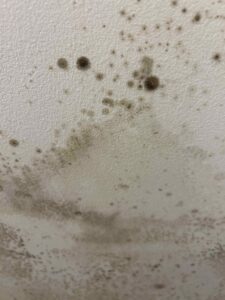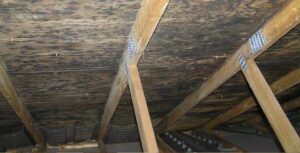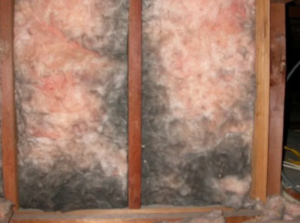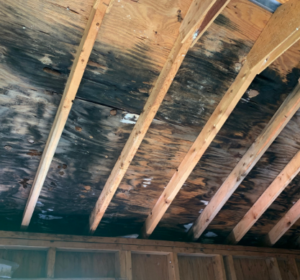Your attic is one of the most overlooked places for mold growth, yet it can be a prime location for spores to thrive due to trapped moisture, poor ventilation, and unnoticed leaks. Identifying mold early can help prevent structural damage and health concerns. Here’s how to determine if you have mold in your attic and what you can do about it.
Common Signs of Mold in the Attic
1. Dark Spots or Stains
Mold often appears as black, green, brown, or white patches on attic surfaces, including wood beams, insulation, and drywall. If you notice discoloration that continues to grow or reappears despite cleaning, it may be mold.


2. Musty or Damp Odor
A persistent musty smell in your attic is a strong indicator of mold growth. Even if mold isn’t visible, its presence may be detected by a mildew-like odor lingering in the space.
3. Deteriorating Insulation
Mold feeds on organic materials, including insulation. If your attic insulation appears damp, clumpy, or deteriorating, mold growth could be present and spreading throughout the space.

4. Roof Leaks or Moisture Buildup
Leaks from the roof can introduce moisture into the attic, creating an ideal environment for mold. If you notice water stains or condensation on surfaces, mold may soon follow.

5. Increased Allergy Symptoms
If you or your family members experience sneezing, congestion, itchy eyes, or respiratory issues, mold spores from the attic could be circulating through your home’s air.
Where to Look for Mold in Your Attic
Mold in attics commonly grows in these areas:
- Wood framing, rafters, and support beams
- Insulation and air ducts
- Roof sheathing and plywood
- HVAC vents and exhaust fans
- Storage boxes and personal belongings
How to Test for Mold
If you suspect mold but aren’t sure, try these methods:
- The Bleach Test: Apply a small amount of diluted bleach to the area. If the stain lightens, it may be mold.
- Humidity and Moisture Testing: Use a moisture meter to check for excess humidity in the attic.
- Professional Mold Inspection: If mold is widespread or hidden, consult a restoration expert by calling RestoPros of Hudson county at (551)233-8333 for testing and evaluation.
How to Prevent and Remove Attic Mold
Prevention Tips:
- Ensure proper attic ventilation to prevent excess humidity.
- Fix roof leaks and inspect for water damage regularly.
- Use mold-resistant insulation and materials.
- Keep attic vents clear and unblocked.
- Control indoor humidity levels below 50%.
Removing Attic Mold:
- Small mold patches can be treated with vinegar, hydrogen peroxide, or baking soda.
- Avoid using bleach on porous surfaces like wood, as it may not fully remove mold.
- If mold covers a large area (over 10 square feet), professional remediation is recommended.
When to Call a Professional
If mold growth is extensive, has returned after previous removal, or is affecting your home’s air quality, it’s best to contact a professional restoration company. Experts can identify the source, safely remove mold, and prevent future growth.
Final Thoughts
Mold in your attic can go unnoticed until it causes significant damage. Regular inspections and moisture control can help prevent mold growth, but if you suspect a problem, taking action quickly is key.
Need expert mold remediation? Contact RestoPros of Hudson County today for professional inspection and removal services.
